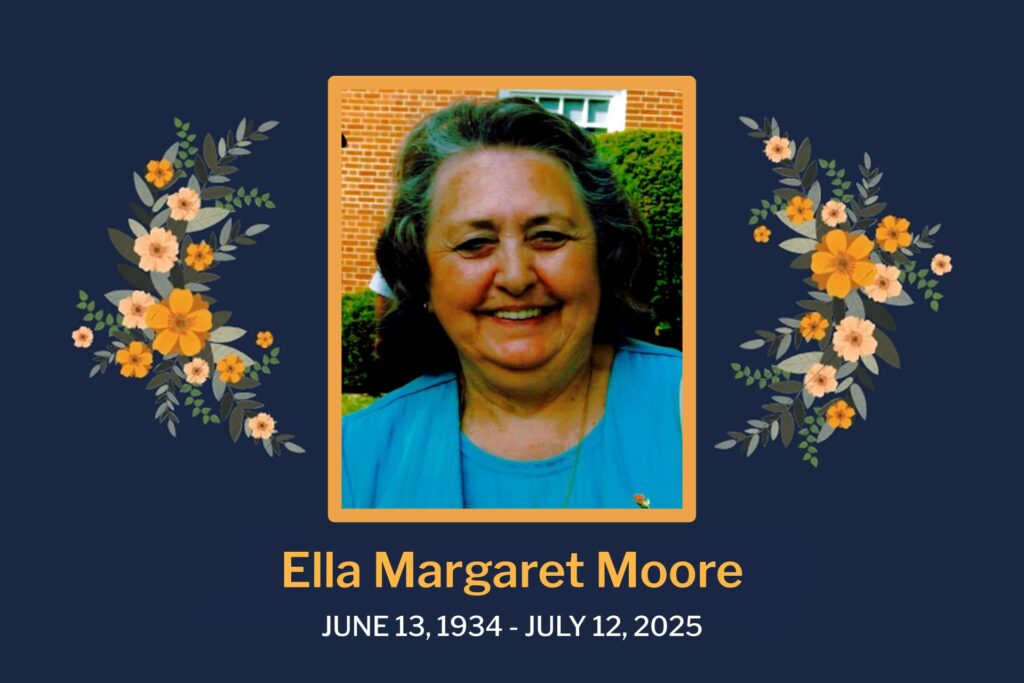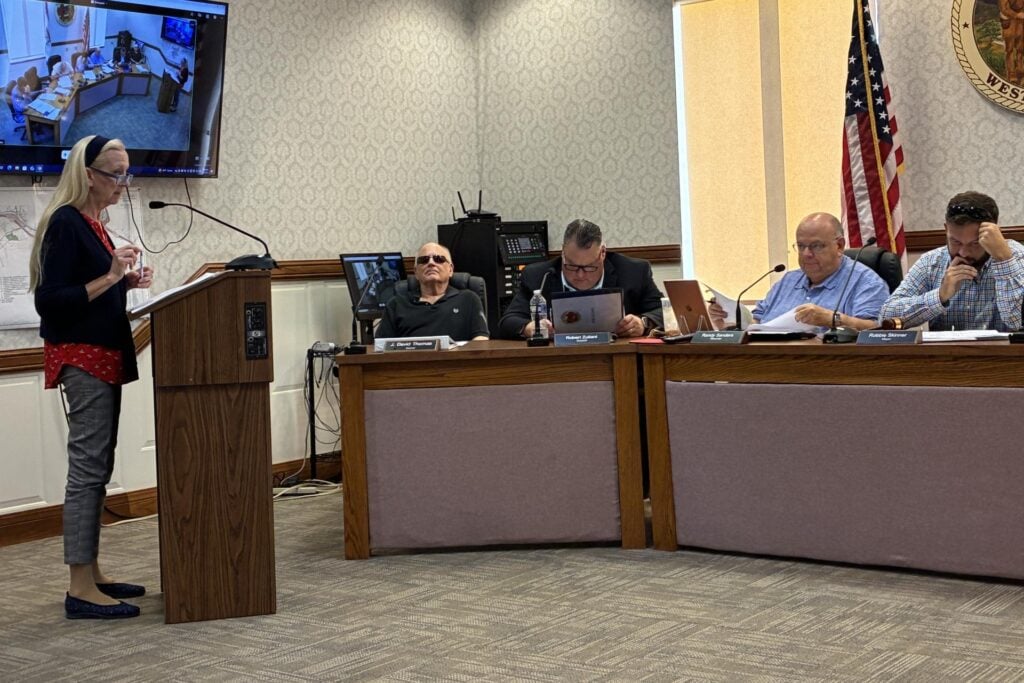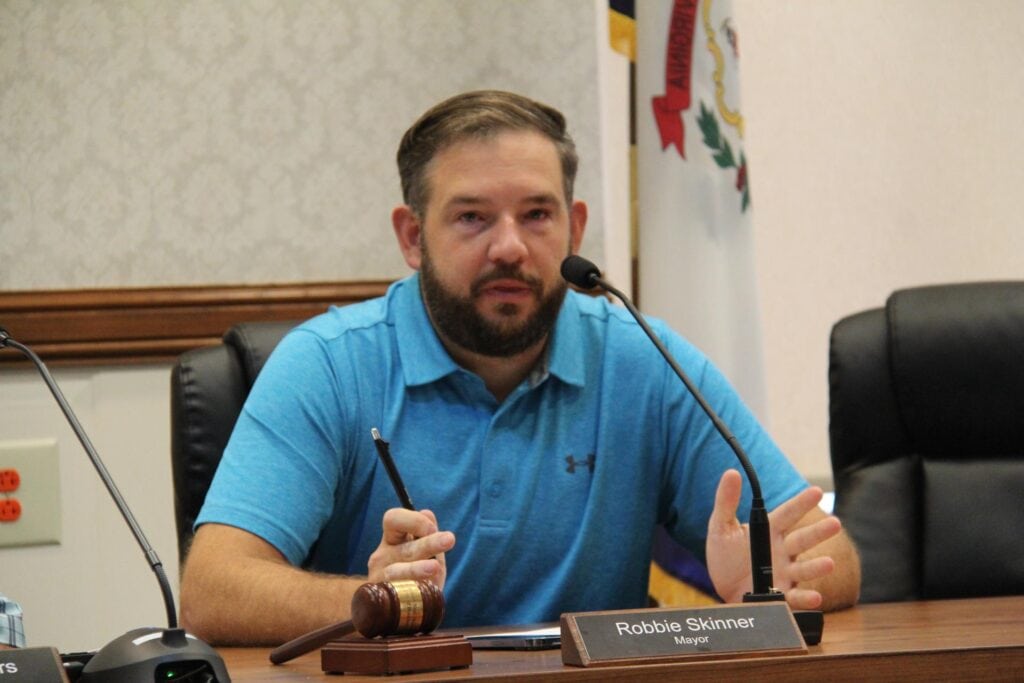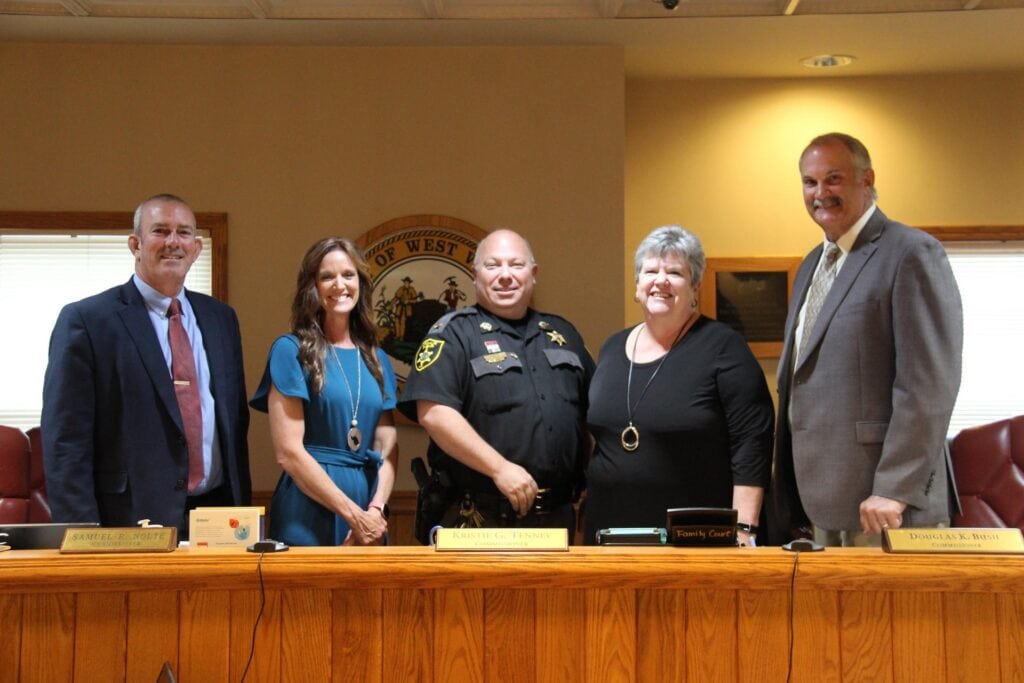Editor’s note: This story was originally published by Mountain State Spotlight. Get stories like this delivered to your email inbox once a week; sign up for the free newsletter at https://mountainstatespotlight.org/newsletter
By Emily Allen, Mountain State Spotlight
MCDOWELL COUNTY — Annetta Tiller is used to water in her yard and her basement; rain swelling the Tug River and its tributaries over their banks is a regular occurrence in McDowell County. But every three or four years, the water will get a little higher, and Tiller and her family will spend hours carrying their belongings out of their home in Bartley and into cars, later parked on top of hills out of the river’s reach.
“It makes you cry because you know you’re going to lose stuff that you don’t have time to save,” Tiller said.
Tiller grew up in Bartley and has seen this play out over and over again. And it’s more than just personal belongings that are affected by the flooding. When the rain comes down hard, the whole community is hit: homes and businesses are devastated, bridges wash out, utility poles are toppled and roadways are destroyed.
“Whenever they’re flooded here, it’s hard for them to bounce back,” Tiller said. “There’s infrastructure that they’ve lost…. It’s really hard to replace those things.”
But despite ongoing flooding in McDowell and throughout the state — including a flood five years ago in several other counties that killed two dozen West Virginians — state officials have failed to act on most of the recommendations from a nearly 20-year-old state flood protection plan.
The result has been state officials scrambling to react after flooding events, and a statewide failure to take proactive steps to protect West Virginians from the reality of more frequent, intense storms in a warming climate.
A flooding roadmap
In 2004, it was already clear that West Virginia had a flooding problem. That year, several state agencies dealing with flood response and planning came together to write a 365-page report: It was a roadmap on how to mitigate flooding damage and create more resilient West Virginia communities, and included a list of policy recommendations for state lawmakers.
“The need for a proactive plan is driven by the value of the lives, property, and resources at risk in the State’s floodplains weighed against the catastrophic and destructive forces of anticipated future flooding,” plan writers noted.
But by 2016, when that catastrophic and destructive future flooding happened, there had never been a comprehensive statewide effort to implement its recommendations. That year, 23 people died from a widespread flooding event, mostly throughout the state’s southern counties like Nicholas, Kanawha and Fayette.
There was a flurry of activity the following year, including a new law to create a state resiliency office for flooding response and prevention. Lawmakers also formed a committee to receive recommendations for new laws from the office, and an advisory board to oversee the office.
But the office wasn’t operational until last year, and didn’t have any state funding until the summer of 2020. Current director, Robby Martin, Jr., was appointed in October after the last director left for a different job only a year into his tenure. Martin, the office’s former deputy director, told lawmakers earlier this month that his job so far has been mostly focused on reviewing the state’s 20-year old flood protection plan and finishing a floodwall in Milton with the U.S. Army Corps of Engineers.
“I’m trying to build an airplane while flying it,” Martin said. “I’m trying to keep up with everything that’s happening.”
Meanwhile, nearly one-fifth of all West Virginia homes are at risk of serious structural damage by flooding, according to an analysis by the First Street Foundation, a New York-based nonprofit that studies flood risk. As the Ohio Valley Resource noted in February, the data showed the risk was especially high in the nation’s poorest counties; in McDowell County, 60% of homes were at risk of structural damage from flooding.
Economic consequences
For McDowell residents living along the creeks and rivers winding throughout their county, most flooding is familiar.
“It’ll come up here, past the creek bank — no big deal to us,” said Bradshaw Mayor Brian Harrison. “Or some will end up in these yards … that’s just small flooding that we learn to accept.”
For Bradshaw residents, the real “flooding” is the the largest and most devastating events, like the so-called “100-year” floods that inundated the county in 1977 and 2001. And sometimes, even when raised structures in Bradshaw avoid the worst of flooding events, homes in smaller communities along the creek in nearby English and Yukon experience it worse. As recently as 2020, a devastating flood resulted in a state declaration of emergency, and high water stranded residents in Coalwood and damaged homes in Yukon. West Virginia National Guard members spent weeks afterward cleaning up debris in the several affected areas of McDowell County.
Besides causing damage that some are still struggling to recover from, these floods have played a role in the ongoing economic development challenges in places like McDowell County. Bradshaw has lost nearly half of its population since 1990, and the downtown’s main street is lined with empty lots where buildings used to be.
“Would you move here?” Harrison asks, gesturing to the empty lots and buildings.
One of the few solutions that have been offered to McDowell County comes from the federal government, but the only homes that are eligible are those that were affected by a flood from more than 40 years ago.
After the notorious flood of 1977 that resulted in water up to 25 feet high along some Tug Fork communities, it took Congress 20 years to authorize the Army Corps of Engineers to help clear and raise buildings that the water had reached. Even then, the Army Corps of Engineers had its hands tied because no one could pay for the work until 2018, when Congress agreed to appropriate $20 million to the county for the 1977 project. So ultimately, homes hit by flooding in 1977 had to wait 41 years for help.
But by then, many residents had moved away, leaving the worst of these structures abandoned and unable to participate in the voluntary Army Corps program. Of the 300 buildings the Army Corps deemed eligible, they’ve made offers to buy only 43 homes. They’ve closed on 36 of these homes, most of which they’ll demolish. This means there will be three dozen fewer buildings to flood during the next big event, but also fewer homes for current residents.
“I would love to see a nice apartment building here that was brought up to [U.S. Housing and Urban Development] standards,” Harrison said of lots that the Army Corps has already cleared.
Dams that could collect extra water during flooding events are another potential solution for McDowell. The West Virginia Conservation Agency helps city and county officials oversee the maintenance of 170 watershed dams scattered throughout the state, most of which were built in the 1960s and 1970s with design and construction help from the federal government (who provided a bulk of the money). But the closest dam to McDowell County is in Hamlin, Logan County, about sixty-five miles north of Bradshaw and Bartley.
“There are places that could’ve benefited, I think, and didn’t. I don’t know the reason for that,” said agency watershed director Gene Saurborn. “I don’t know how the planning was done for that. I’ve often thought of that when I’m down in those communities doing flood work.”
The people who wrote West Virginia’s 2004 flood protection plan had other ideas, too. They recommended that the state designate more resources to the agency overseeing flood response at the time, the West Virginia Office of Emergency Services, and more support to local floodplain managers throughout the state, who create rules about where flood prone and flood-susceptible structures are allowed to be.
They also recommended state legislators, as well as elected officials in cities and counties, consider new laws and policies to improve stormwater management, which could help by keeping the ground from becoming oversaturated and contributing to larger flooding events. County commission and city or town councils could also encourage more sustainable projects on waterways that restore wildlife to the water and naturally clean it, instead of quick-fix practices like dredging, which would scrape mud and litter from the bottom of a stream.
Most of the ideas in the report for statewide and local projects would require new laws and substantial funding. Yet very few laws and appropriations have been made since 2004 by state officials to make these recommendations a reality.
Meanwhile, in Bartley, Annetta Tiller says family, friends and neighbors are living in homes that are impacted almost every year by flooding but weren’t eligible for assistance from the Army Corps because the damage happened after 1977. She and her neighbors wonder why more hasn’t been done, even quicker fixes like dredging or infrastructure repairs like those to a faulty bridge in the community that gets worn down every year with new flooding.
“I think the community as a whole, we’re just beaten down with so many different things,” Tiller said. “The roads are in bad shape, our homes are in bad shape, the economy is in bad shape.”
Reach reporter Emily Allen at emilyallen@mountainstatespotlight.org.












